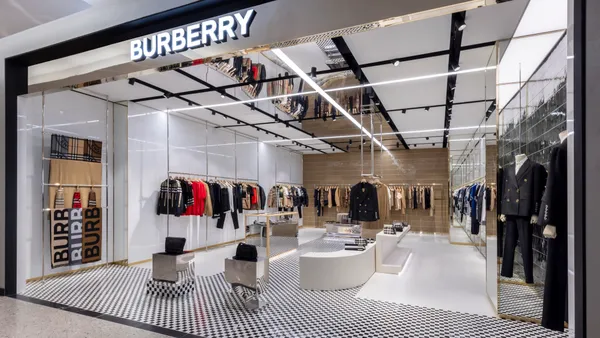Dive Brief:
-
With e-commerce up dramatically, some 80,000 — and as many as 150,000 — U.S. stores could close over the next five years, according to a report from UBS analysts led by Michael Lasser and Jay Sole. They expect apparel, consumer electronics and furniture stores to be hard hit and home improvement and grocery stores to be largely spared.
-
While online sales accelerated to 18% of retail last year, up from 14% in 2019, the number of closures fell to 3,500 from 3,900, thanks to the government's financial support to consumers and as less spending went to services. Consumption of goods grew 6% even as total personal expenditures declined, according to the report. "However, we think those trends are temporary," analysts said.
-
With excess space before the pandemic, and their specialty tenant and anchor bases under pressure, malls face a reckoning. Department store sales fell 18% last year and are down 43% since before the Great Recession, UBS said. Despite many closures in the sector, including at Sears, Macy's, Bon-Ton and J.C. Penney, more are likely, they said.
Dive Insight:
The pandemic year was brutal for most retailers, and for many it meant a trip to bankruptcy court. Yet some of the worst fallout is happening now, as the industry takes stock of which consumer trends turn out to be permanent and which may be fleeting.
While the extent of any permanent online shift is yet to be determined, for example, UBS joins Wells Fargo, the Conference Board and AlixPartners in its finding that from now on, more consumers will continue to buy more online. In their report, UBS analysts said they assume that e-commerce penetration will reach 27% in 2026, up from 18% last year.
That's changing the landscape, literally: By UBS's measure, Amazon last year grew its U.S. fulfillment space by some 100 million square feet; that plus Wayfair's fulfillment expansion reached the equivalent of 21,000 retail stores.
And it is determining how, where and whether retailers run their stores. For example, UBS analysts presume "that retailers evolve and adapt their store formats to be the centerpiece of interacting with consumers, including fulfilling online orders." That will push store-based fulfillment of online orders from 10% last year to 20% in 2026, they said, noting that every 100 basis point increase in e-commerce is akin to sales from 8,000 stores.
For malls and their anchors, UBS sees a dismal future. There were arguably too many shopping centers and department stores even before the pandemic and its attendant acceleration of e-commerce. While the number of shopping centers in the U.S. grew modestly over the past year, the build-up of the last four decades may start to slide, UBS said.
Much of that has to do with department stores, which are supposed to drive foot traffic to malls. In the trailing 12 months, department store sales fell 18% to $110.3 million. Store productivity in the sector is "well below peak levels" of the second quarter of 2005, when sales per store were $18.6 million, compared to $10 million today, per the UBS report. In light of comp sales trends, apparel sales declines and the siphoning of market share to off-price retailers, UBS analysts don't see store productivity to improve much at stores that do remain open.
Both specialty retailers and department stores — the core of the traditional mall's tenant base — have accelerated store closures, yet traffic declines continue, UBS said. By contrast, off-price retailers "continue to grow units and comp sales." Clothing sales are down 26.4% compared to last year, are 6% below their pre-recession peak, but 2% above recession lows. Overall, the clothing store footprint has contracted 14% since the fourth quarter of 2007, according to the report.
That leads UBS to expect more regional, highly leveraged department stores to close "and potentially go out of business," despite any near-term sales lift from more stores opening and more shoppers heading to stores.
The existing department store footprint "doesn't yet reflect the industry's state of structural decline," UBS said.















